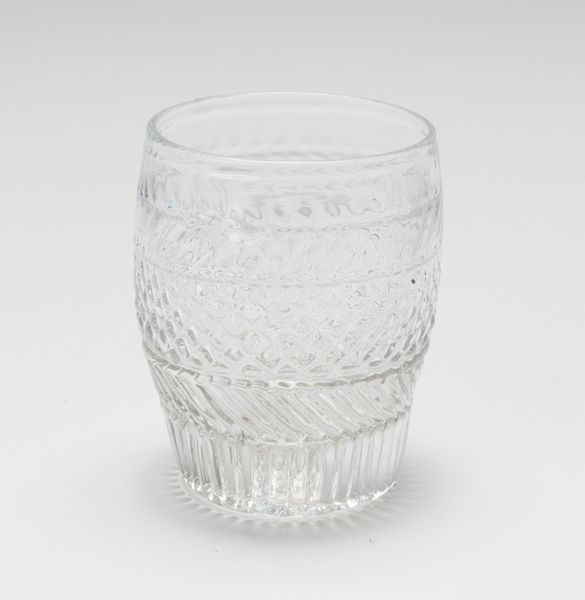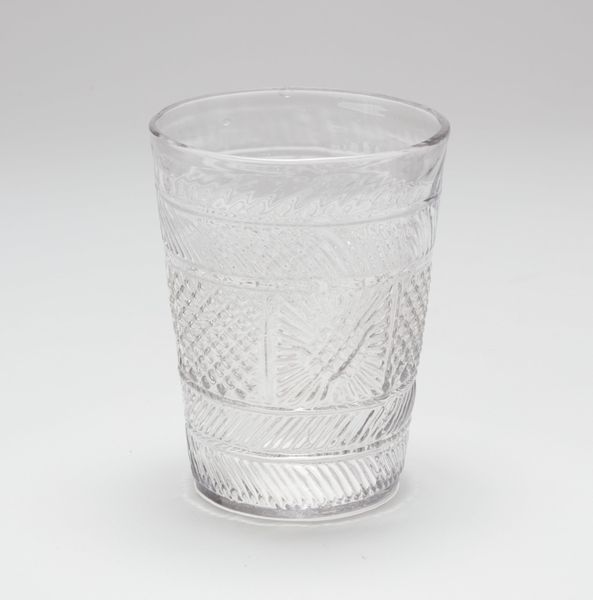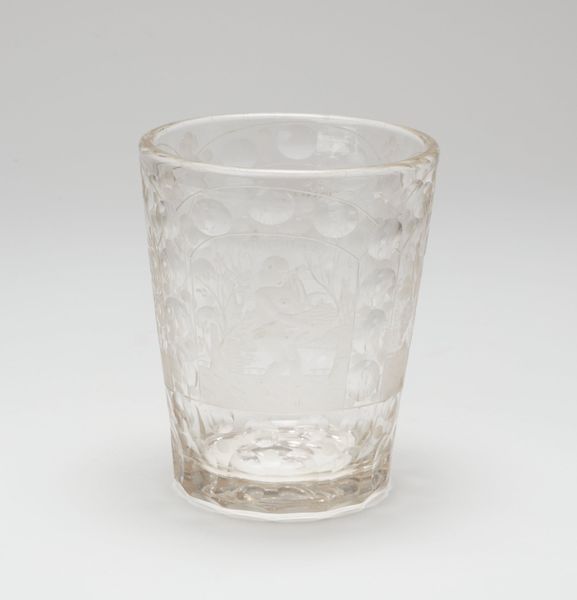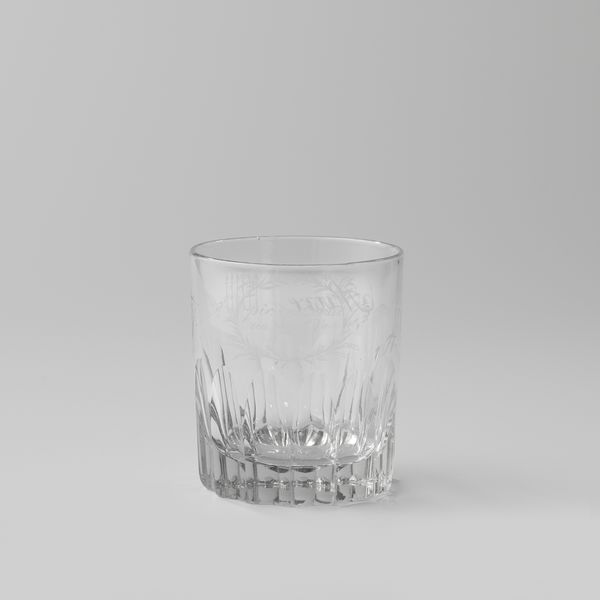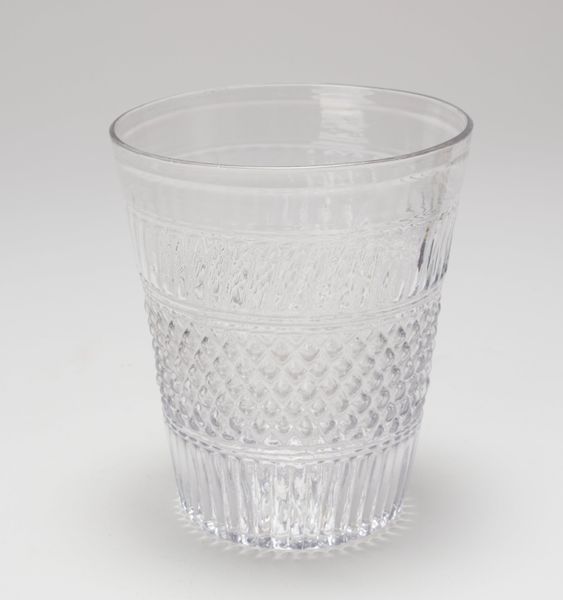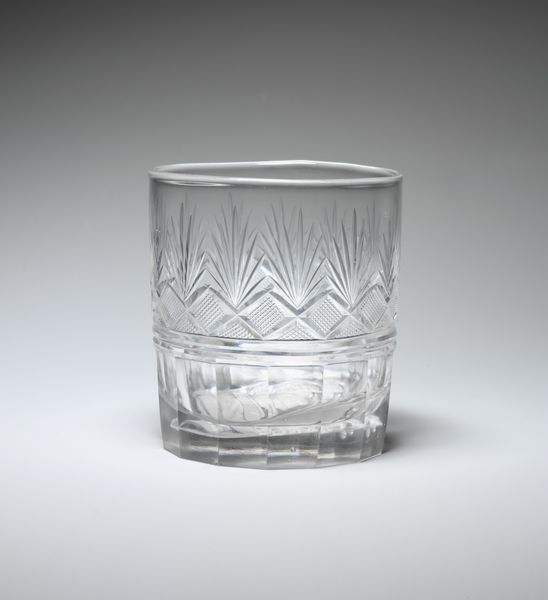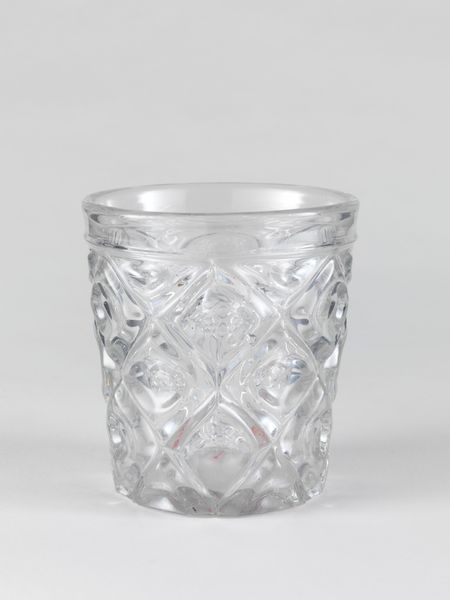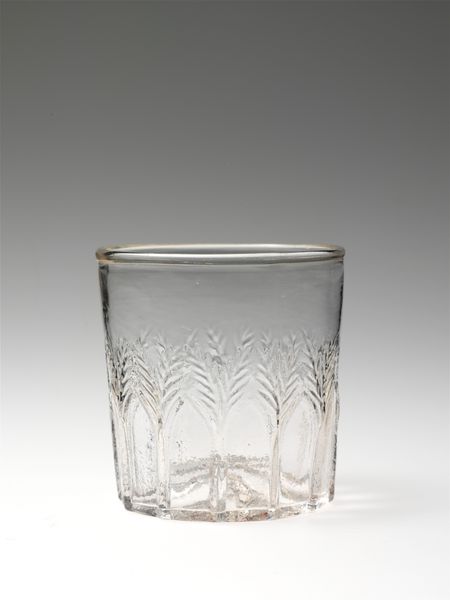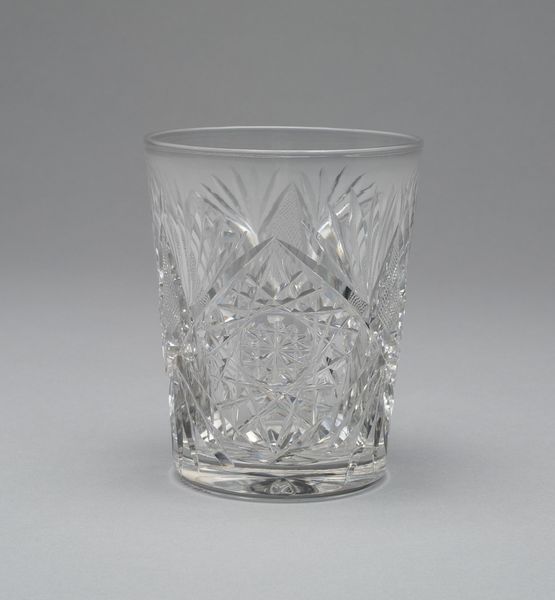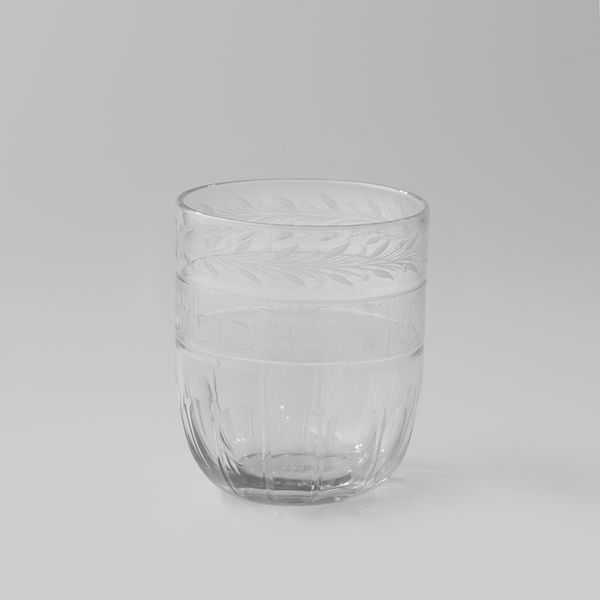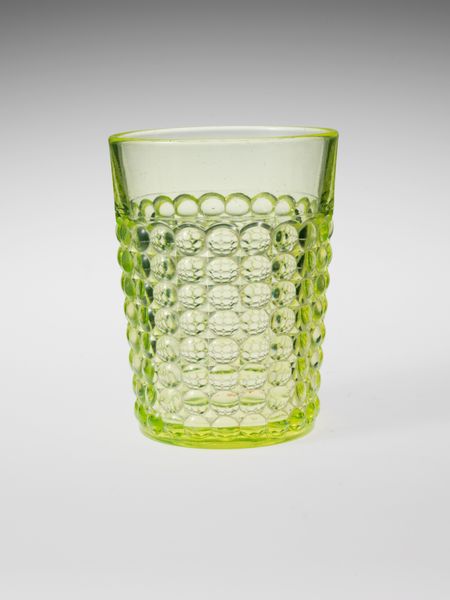
glass
#
glass
#
geometric
#
decorative-art
Dimensions: H. 3 1/2 in. (8.9 cm)
Copyright: Public Domain
Curator: Isn’t that "Tumbler," created sometime between 1860 and 1870 by Bakewell, Pears and Company, just extraordinary? Editor: Yes, a stunning little piece. The precise geometric pattern cut into the glass—it gives such a tactile feel, even just looking at it. A humble vessel elevated. Curator: Absolutely. Bakewell, Pears and Company was renowned for its innovations in glassmaking during the 19th century. They really pushed the boundaries of what was possible in terms of mass production and artistry. Considering this piece now housed at the Metropolitan Museum of Art in New York, how has its function transformed from everyday to display? Editor: Well, this would have been an object produced and sold in significant quantities, likely to a burgeoning middle class. There's a whole socio-economic story embedded in the accessibility of such decorative items. Displaying it here gives the company's workers a renewed presence. It asks us to examine not just artistic flair, but consider craft, design, and their connection to larger industrial and market structures. Curator: Precisely, and to your point about function, glass like this speaks volumes about Victorian social rituals—the elaborate dinner parties, the culture of display. It’s about constructing an image of prosperity and good taste. It would certainly refract differently, the gas light flickering. It would also probably look so different being mass produced today! Editor: Agreed! But while the Tumbler speaks to social aspiration, its inherent fragility also hints at the precariousness of such status. All this work and the tiniest knock could obliterate the object in an instant. Curator: The glass work reflects how artifacts get collected, shown, and presented, thereby impacting how viewers connect with culture. Editor: That tension between everyday utility and artistic statement is fascinating. Looking at its structure prompts a lot of thought and many more questions about Victorian consumer culture.
Comments
No comments
Be the first to comment and join the conversation on the ultimate creative platform.

